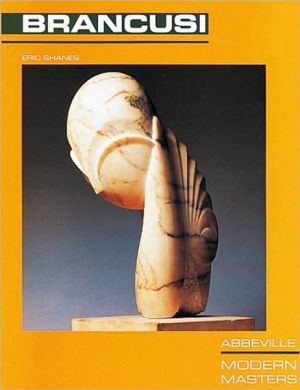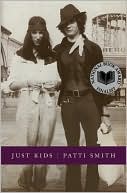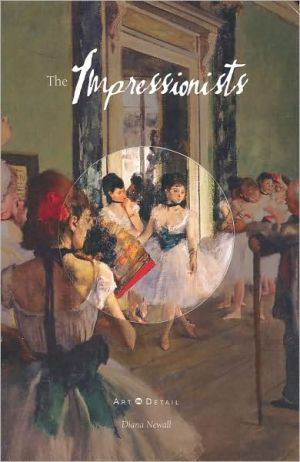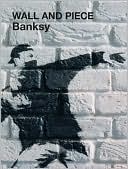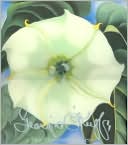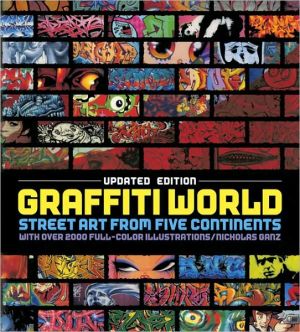Constantin Brancusi, Vol. 12
"When you see a fish," Brancusi once commented, "you do not think of its scales, do you? You think of its speed, its floating, flashing body seen through water. . . . Well, I've tried to express just that... I want just the flash of its spirit." Brancusi captured that "flash of spirit" in works of extraordinary beauty and intense simplicity. Though enjoying the pose of a canny peasant, he was, in fact, a sophisticated artist who distilled a multitude of sources into his highly complex work.\...
Search in google:
"When you see a fish," Brancusi once commented, "you do not think of its scales, do you? You think of its speed, its floating, flashing body seen through water. . . . Well, I've tried to express just that... I want just the flash of its spirit." Brancusi captured that "flash of spirit" in works of extraordinary beauty and intense simplicity. Though enjoying the pose of a canny peasant, he was, in fact, a sophisticated artist who distilled a multitude of sources into his highly complex work. This volume in the Modern Masters series is an important and perceptive study of the scupltor Constantin Brancusi, whose arresting forms have exerted a powerful impact on the art of this century. By incisively evaluating the diverse influences that channeled into the artist's work--including his academic training and brief apprenticeship with Auguste Rodin, the folk art and architecture of his native Romania, Cubism, and African art--Eric Shanes has produced an insightful study that reveals how this complex artist achieved the expressive simplicity of his innovative sculptures. An extensive "Notes on Technique" section, illustrated with evocative views of the artist's studio, illuminates Brancusi's methods of working in all media, including photography, which he used to record his own ideas about how his scuplture should be seen. The many photographs by Brancusi are complemented by sensitive color illustrations that capture the essence of his art. Written with a clarity of prose that well serves the clairty of the sculptor's own work, this much-needed book presents the fascinating story of a profoundly influential artist. About the Modern Masters series: With infomative,enjoyable texts and over 100 illustrations--approximately 48 in full color--this innovative series offers a fresh look at the most creative and influential artists of the postwar era. The authors are highly respected art historians and critics chosen for their ability to think clearly and write well. Each handsomely designed volume presents a thorough survey of the artist's life and work, as well as statements by the artist, an illustrated chapter on technique, a chronology, lists of exhibitions and public collections, an annotated bibliography, and an index. Every art lover, from the casual museumgoer to the serious student, teacher, critic, or curator, will be eager to collect these Modern Masters. And with such a low price, they can afford to collect them all. Other Details: 115 or more illustrations, approximately 48 in full color 128 pages 8 1/2 x 8 1/2" Published 1989 cloaked his works in factitious meanings; as a primitivistic sculptor; as a sculptor who cut himself off from his Romanian origins; and as a sculptor who cut himself off from anything but those origins. As is usual with such disputes, the fact of the matter lies somewhere in the middle: Brancusi was as responsive to the folk traditions of his homeland as he was to the demands of his own pioneering aesthetic. For a time after 1913 the sculptor was certainly influenced by the forms (though not the content) of African carving; but throughout his life he also maintained and developed a wide repertory of forms that were derived from Romanian folk art and architecture, as well as from other Slavonic, Egyptian, Buddhist, and Cycladic sculptural traditions. Although he lived in Paris rather than Romania for a variety of cultural and economic reasons, until the late 1940s he always maintained his connections with his country of origin and, indeed, created his greatest work there in 1937-38. The deeper aim of this book is to offer an appraisal of Brancusi's work that takes its cue from the sculptor's own frequent statements concerning his art, most particularly those touching upon the "working philosophy" that compelled him. It respects his view that his work was not abstract and seeks to illuminate what he was attempting to express. His meanings were never afterthoughts appended to his sculptures; for the most part, they generated the forms of his works. The diverse influences on Brancusi are examined here within the framework of the associative thinking that was integral to his art, and thus the true significance of those influences may become clearer. This book differs from the previous Brancusi literature in one other important respect: departures from a strictly chronological narrative of the sculptor's life have been made in order to trace an essential creative process. Throughout his maturity Brancusi worked simultaneously on series of sculptures with different themes. For example, he made twenty-eight marble and bronze sculptures of birds over a period of nearly forty years. When these are divorced from one another and examined amid the works in other series made during the same period, the clear formal and thematic links within a series, and from series to series, can be obscured. It is hoped that by departing from a chronological approach in order to track each series, a more revealing account of the most coherent body of twentieth-century sculpture will emerge. "Concise, well-produced, and well-written." --New York Book Review "Brief, affordable, well illustrated, and packed with information." --Art in America Author Biography: A painter, art historian, and lecturer on the history of modern art, Eric Shanes is also the author of Impressionist London and seven important books on Joseph Mallord William Turner.Publishers WeeklyShanes, a British painter and art historian, here reconciles the ``formal simplicity'' of Brancusi's (1876-1957) sculpture with its ``richness of meaning.'' He treats the works thematically, dividing them into categories, following their chronological development and illustrating his analysis with his own photographs of the sculptures. A chapter about ``The Natural World,'' for example, deals with the celebrated Bird in Space and Fish series. Although Brancusi's oeuvre lends itself well to this compartmentalized approach, the result is slightly fragmented. The last chapter fails to synthesize previous discussions, instead proffering generalities (``Brancusi elevated the idealism of Renaissance art to a new plane, creating a modern sculptural language in the process''). Some of the more challenging modernist issues operating in Brancusi's art--the polarities of real and ideal and abstraction vs. representation--are raised but not resolved. A chapter consisting of the artist's statements on art and a section about his techniques, however, round out the book nicely. (July)
Introduction\ Why should a relatively plain iron column in a provincial town in faraway Romania be regarded as one of the high points of modern sculpture? To answer that and related questions concerning the art of Constantin Brancusi, as well as to give a short account of the sculptor's life, is the primary purpose of this book. Yet the book enjoys a second, more fundamental aim as well.\ Brancusi is widely accepted as the most important and original sculptor of this century, and his work exemplifies the new responsiveness to form and materials that was central to the modernist aesthetic. He was regarded as a major figure by such leading members of the avant-garde as Guillaume Apollinaire, Pablo Picasso, Henri Matisse, Marcel Duchamp, Julio Gonzalez, Kurt Schwitters, Man Ray, Piet Mondrian, Amedeo Modigliani, Francis Picabia, Erik Satie, James Joyce, Tristan Tzara, and Ezra Pound (who wrote an important essay on him in 1921). His work appealed to diverse tastes within modernism, being hailed both by the Dadaists, who eschewed rationalism in art, and by members of De Stijl, who extolled it. He also influenced a great many modernist sculptors and painters, including Wilhelm Lehmbruck, Barbara Hepworth, Henry Moore, Fernand Leger, and David Smith; and his ensemble at Tîrgu-Jiu inspired several environmental sculptors, such as Christo and Walter De Maria.\ Paradoxically, the view of Brancusi as a leading member of the modern movement has tended to obscure rather than clarify his artistic aims. Brancusi has long been hailed as an abstract sculptor by nonrepresentational artists and by writers favoring abstract art, who have frequently rejected the symbolic and metaphoricalmeanings of his sculptures because they would detract from the status of the works as purely abstract objects. Even those meanings supplied by the sculptor himself have often been ignored. Instead, it has been asserted that Brancusi really wanted to be a wholly abstract artist but, lacking the courage to do so, he cloaked his pure abstractions in symbolic meaning. Yet the sculptor frequently and vehemently denied that his work was at all abstract. He held that it represented a level of existence beyond everyday appearances, and it was in order to address that reality that he employed allegory and symbolism.\ Another oft-encountered misconception is the notion that Brancusi's passing interest in African carving during the mid-1910s made him a "primitive" artist and that "African art was the most important influence in Brancusi's career." Such a view, which has been propounded by a great many Western writers, ignores the fact that the formal influence of African carving on Brancusi's work became apparent only about 1913--some six years after the sculptor had struck out in a completely new artistic and aesthetic direction with The Prayer of 1907. The apprehension of Brancusi himself as a primitive is totally contradicted by the extent of his academic training and by the formal sophistication of the majority of his works.\ Such misconceptions are linked to conflicting artistic and political ideologies. Brancusi was undoubtedly committed to modernism, but his commitment has been misinterpreted as an exclusive one: while it is permissible for a modernist to have embraced African "primitivism," as Picasso, Georges Braque, and a great many others did, some leading Western writers have not accepted Romanian "primitivism" as an equally potent influence on Brancusi. Instead, they claim that he turned his back on the visual and folkloric traditions of his native Romania by choosing to live in Paris for the major part of his career. As a counter to this Western bias, some nationalist Romanian writers on Brancusi have asserted that he was influenced by Romanian traditions to the exclusion of all others, which is equally untrue. All these misconceptions have resulted in multiple, mutually exclusive views of Brancusi: as a sculptor whose highly abstract works contain no meanings other than purely formal ones; as an abstractionist who cloaked his works in factitious meanings; as a primitivistic sculptor; as a sculptor who cut himself off from his Romanian origins; and as a sculptor who cut himself off from anything but those origins.\ As is usual with such disputes, the fact of the matter lies somewhere in the middle: Brancusi was as responsive to the folk traditions of his homeland as he was to the demands of his own pioneering aesthetic. For a time after 1913 the sculptor was certainly influenced by the forms (though not the content) of African carving; but throughout his life he also maintained and developed a wide repertory of forms that were derived from Romanian folk art and architecture, as well as from other Slavonic, Egyptian, Buddhist, and Cycladic sculptural traditions. Although he lived in Paris rather than Romania for a variety of cultural and economic reasons, until the late 1940s he always maintained his connections with his country of origin and, indeed, created his greatest work there in 1937-38.\ The deeper aim of this book is to offer an appraisal of Brancusi's work that takes its cue from the sculptor's own frequent statements concerning his art, most particularly those touching upon the "working philosophy" that compelled him. It respects his view that his work was not abstract and seeks to illuminate what he was attempting to express. His meanings were never afterthoughts appended to his sculptures; for the most part, they generated the forms of his works. The diverse influences on Brancusi are examined here within the framework of the associative thinking that was integral to his art, and thus the true significance of those influences may become clearer.\ This book differs from the previous Brancusi literature in one other important respect: departures from a strictly chronological narrative of the sculptor's life have been made in order to trace an essential creative process. Throughout his maturity Brancusi worked simultaneously on series of sculptures with different themes. For example, he made twenty-eight marble and bronze sculptures of birds over a period of nearly forty years. When these are divorced from one another and examined amid the works in other series made during the same period, the clear formal and thematic links within a series, and from series to series, can be obscured. It is hoped that by departing from a chronological approach in order to track each series, a more revealing account of the most coherent body of twentieth-century sculpture will emerge.
Introduction Early Life and Work Maturity The Natural World The Human World The Beginning of the World The Avenue of Heroes The Final Years Artist's Statements Notes on Technique Chronology Exhibitions Public Collections Selected Bibliography Index
\ Publishers Weekly - Publisher's Weekly\ Shanes, a British painter and art historian, here reconciles the ``formal simplicity'' of Brancusi's (1876-1957) sculpture with its ``richness of meaning.'' He treats the works thematically, dividing them into categories, following their chronological development and illustrating his analysis with his own photographs of the sculptures. A chapter about ``The Natural World,'' for example, deals with the celebrated Bird in Space and Fish series. Although Brancusi's oeuvre lends itself well to this compartmentalized approach, the result is slightly fragmented. The last chapter fails to synthesize previous discussions, instead proffering generalities (``Brancusi elevated the idealism of Renaissance art to a new plane, creating a modern sculptural language in the process''). Some of the more challenging modernist issues operating in Brancusi's art--the polarities of real and ideal and abstraction vs. representation--are raised but not resolved. A chapter consisting of the artist's statements on art and a section about his techniques, however, round out the book nicely. (July)\ \
